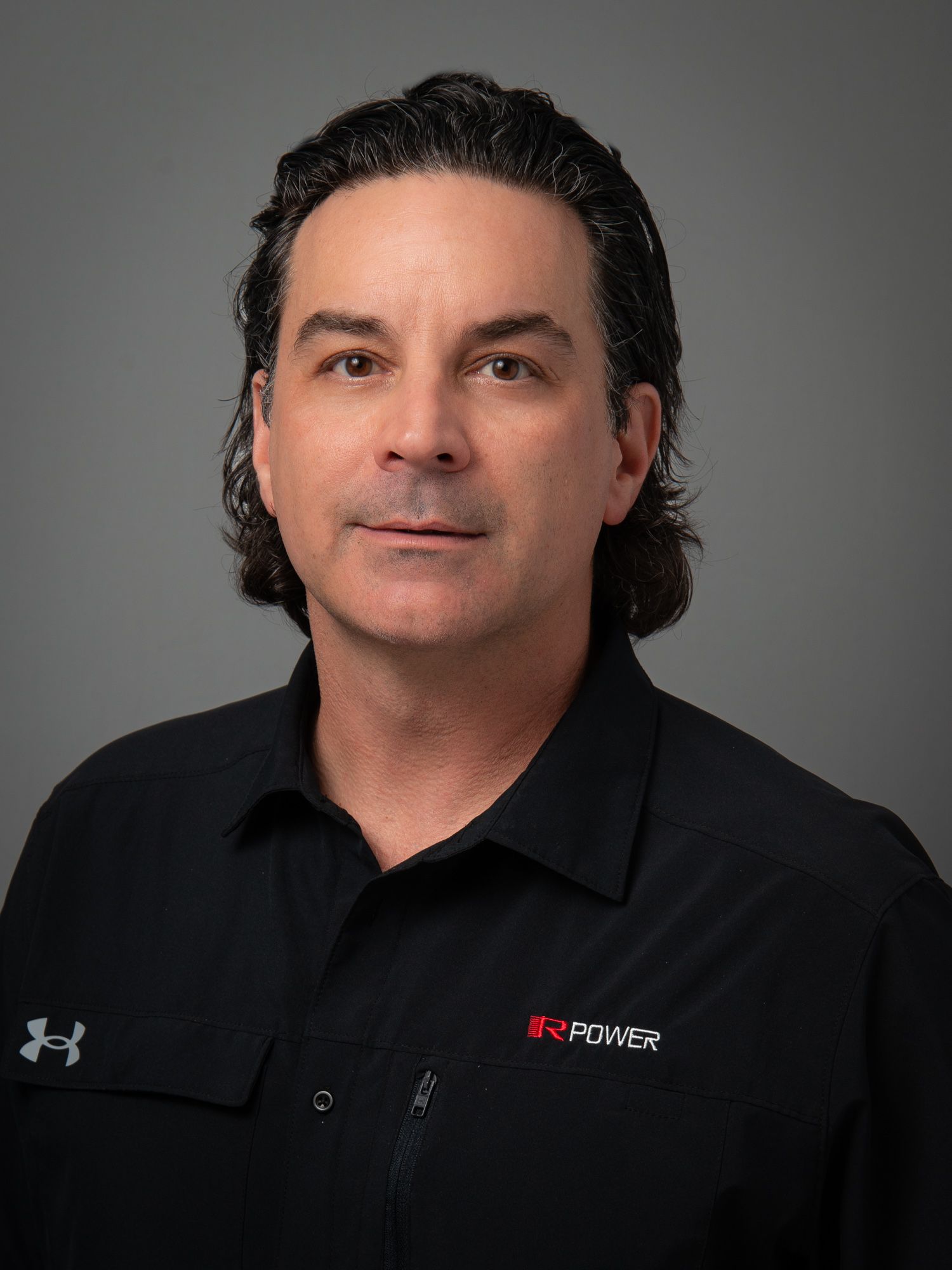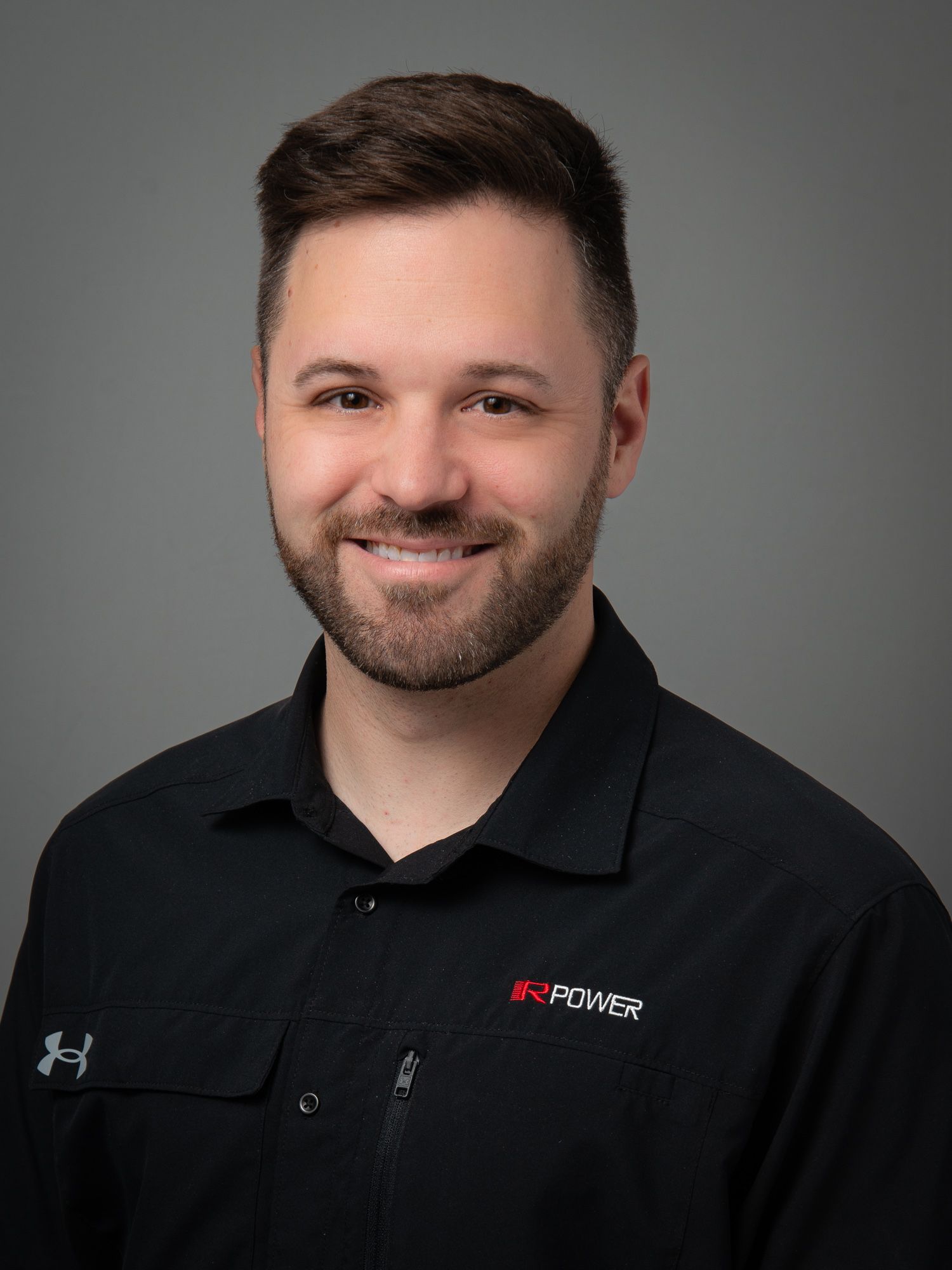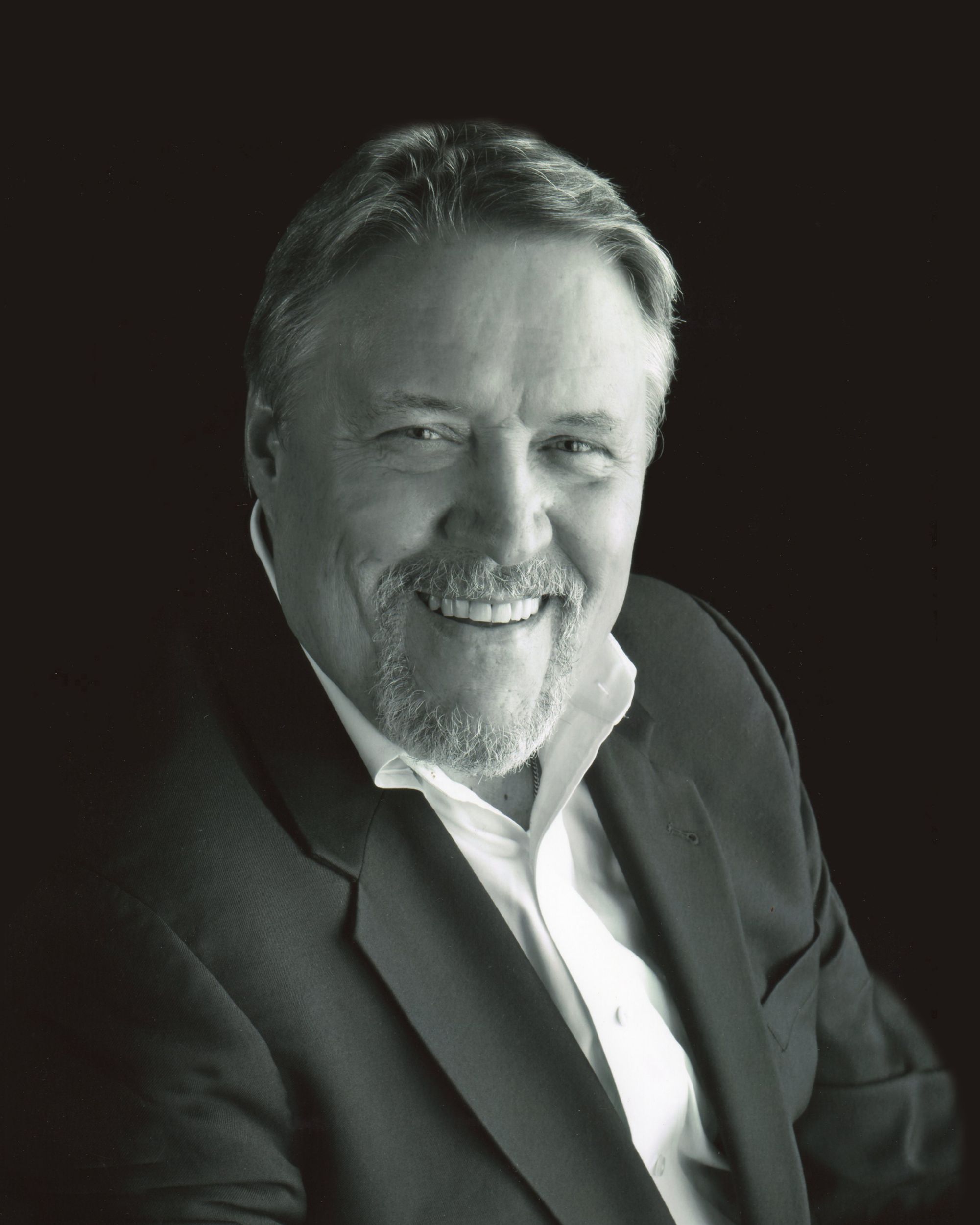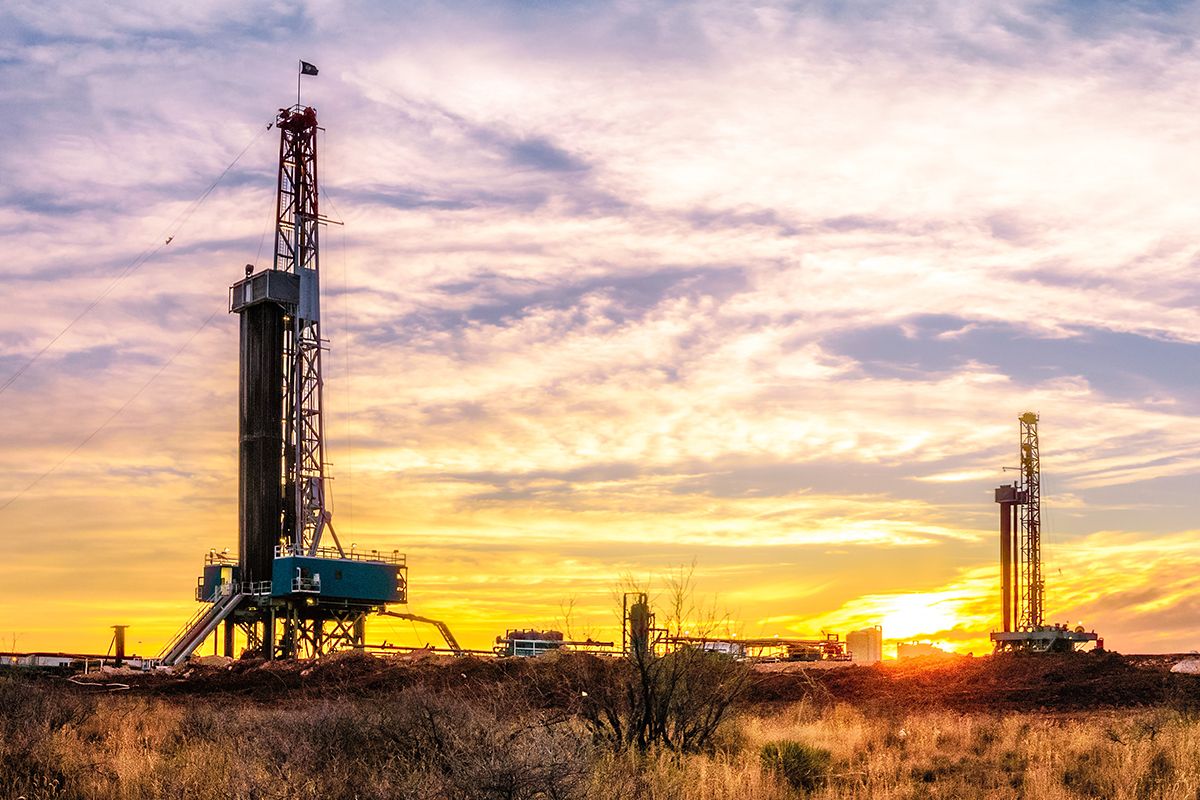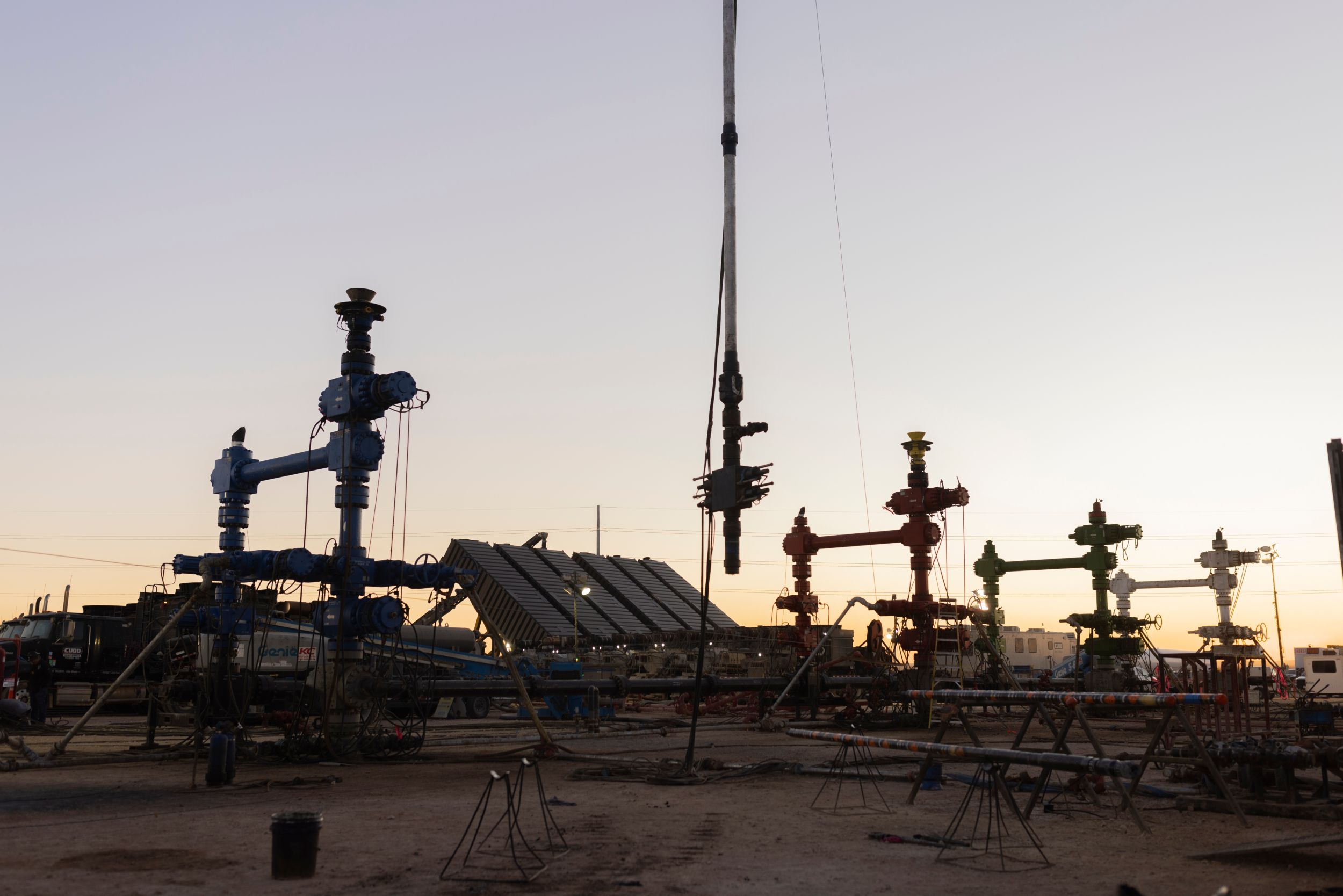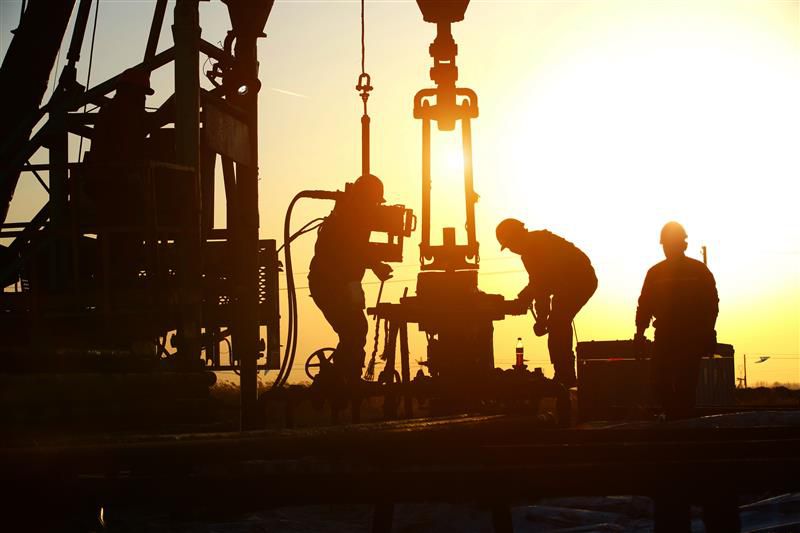If you already have an existing account with another Cat App, you can use the same account to sign in here.
One Account. All of Cat.
Your Caterpillar account is the single account you use to log in to select services and applications we offer. Shop for parts and machines online, manage your fleet, go mobile, and more.
Account Information
Site Settings
Security
Prime and Backup Power Generation Solutions with RPower
September 18, 2024
Parts & Services
-
Parts & Services Home for Oil & Gas
Learn More -
Customer Value Agreements for Oil & Gas
Learn More -
Digital Services for Oil & Gas
Learn More -
Gas Compression Training
Learn More -
Finance and Warranty for Oil & Gas
Learn More -
Parts and Repair Options for Oil & Gas
Learn More -
Cat® Reman Solutions for Oil & Gas
Learn More
Sustainability
About
In this episode of the Energy Pipeline Podcast, Jamie Smith and Tony Mente from RPower discuss prime and backup power generation solutions for the oil and gas industry. They share their backgrounds in the power generation industry and how they got into the field. R-Power develops, builds, owns, operates, and optimizes distributed energy resources, with a focus on natural gas generator solutions. They provide standby as a service, offering resiliency and grid services to customers. The guests also discuss the role of R-Power in the oil and gas industry, the challenges they face, and the future of natural gas in energy production.
Prime and Backup Power Generation Solutions with RPower - Ep 64 - Transcript
Read the full episode transcript
00:00:00 Speaker 1
This episode of The Energy Pipeline is sponsored by Caterpillar Oil & Gas. Since the 1930s, Caterpillar has manufactured engines for drilling, production, well service, and gas compression. With more than 2,100 dealer locations worldwide, Caterpillar offers customers a dedicated support team to assist with their premier power solutions.
00:00:28 Speaker 2
Welcome to The Energy Pipeline Podcast, with your host, KC Yost. Tune in each week to learn more about industry issues, tools, and resources to streamline and modernize the future of the industry. Whether your work in oil and gas, or bring a unique perspective, this podcast is your knowledge transfer hub. Welcome to The Energy Pipeline.
00:00:52 KC Yost
Hello, everyone, and welcome to this episode of The Energy Pipeline Podcast. Today we'll be discussing prime and backup power generation solutions for the oil and gas industry. Our guests are Jamie Smith and Tony Mente from RPower. Welcome to The Energy Pipeline Podcast, guys.
00:01:09 Jamie Smith
Hey, KC. Thanks for having us. Excited to be here today.
00:01:13 Tony Mente
Yeah, thanks for having us.
00:01:15 KC Yost
Yeah. Glad you guys are here. Before we start talking about RPower and power generation, I want to take a few minutes, if you would please, to share your backgrounds with our listeners, and how you guys got into the power generation industry. Jamie, let's start with you. You got your undergraduate degree from the US Coast Guard Academy. Thanks for your service. Go ahead, tell us about yourself.
00:01:35 Jamie Smith
Yeah. No, for sure. Coast Guard Academy graduate, great class of 2000. After graduating from the Coast Guard, spent 10 years actually serving in the Coast Guard. Half that time I spent at sea, had command of a Coast Guard cutter. Did some really interesting things, as part of drug interdiction, illegal alien interdiction, those types of things. Then I went to graduate school, earned my engineering degree, and eventually went back and taught at the Coast Guard Academy before getting out in 2010. I got out in 2010, and that's when I got into the power business.
00:02:12 KC Yost
Yeah, don't sell that too short. I believe there's Stanford and Emery on there somewhere, right?
00:02:19 Jamie Smith
I did. I did an engineering degree at Stanford. It was a great experience, great school. Then when I got out of the Coast Guard in 2010, I went to work at General Electric. At the time, General Electric had their junior officer leadership program is what they called it. That was for former military officers who were getting out of the military, and just looking to make their way in the corporate world, to transition. That's where I got into the power generation business, into distributed generation. Natural gas reciprocating generators. At the time, General Electric owned two product lines with them, Waukesha and Jenbacher. That's really where I cut my teeth.
00:03:00 KC Yost
Was GE still based in Pittsburgh back then?
00:03:02 Jamie Smith
They were based everywhere. I was based in Atlanta. Or Marietta, right outside Atlanta at the time.
00:03:09 KC Yost
Okay.
00:03:09 Jamie Smith
That's where the big power services business was. Then I spent six years at GE. Actually, that's where I met Tony. Tony was working with Waukesha when GE acquired Waukesha. I left GE in 2016. I went back into my maritime roots, with the American Bureau of Shipping. I was president of ABS Americas, and did a few jobs there. After about three years of that, I really missed the power gen world, and I saw where the distributed generation business was going. In 2019, I went to work for Generac Power Systems, working in their commercial and industrial business. Trying to grow their global gas products, their natural gas solutions. Again, Tony and I worked at Generac. But during that time is when we really saw the value and the need for distributed energy solutions. We ran across a guy by the name of Jeff Starcher. He was the CEO and founder of RPower. Tony and I joined him shortly after he founded the company. That was late'21, early 2022. I could talk a little bit more about what RPower does, but that's how I got here today.
00:04:23 KC Yost
Excellent, excellent. It sounds like a great trip that you've been on. Tongue twisted there, tongue twisted. Great. Absolutely. Tony, you got your engineering degree from Milwaukee School of Engineering. We talked before we started recording. I'm sorry I'd never heard of MSOE, but I looked it up. I should have known about this school, as many engineers as I've hired over the year. But according to US News and World Report, your alma mater's ranked 11th best engineering school in the United States for 2024. Hats off to you, guy. The cream of the cream.
00:05:03 Tony Mente
Yeah. No, my time at MSOE was good. I actually went there, one of the reasons, it was a great engineering school and local to the area. Grew up and was raised in Milwaukee area, so it wasn't a secret to me because it was close by. Went for mechanical engineering. I have always had the interest in cars, and that kind of stuff. That's what guided me towards mechanical engineering. Played soccer at MSOE, and that was what brought me in. Then after graduating in 2009 to a market that had just collapsed, I got to take a little bit of time off while the job I was supposed to have went away. Then got a design engineering job that taught me that I don't really want to do design engineering work full-time, and sit and do CAD, and 3D model things all day. That was a good learning experience. Had the opportunity then, a friend of mine was working at Waukesha Engine prior to GE's acquisition, as Jamie mentioned. Worked there as an application engineer, doing global application engineering. Got a good opportunity to travel the world and visit all sorts of fun, different oil and gas places. Some more glamorous than others. Through that time, went through the full GE, when they bought Waukesha, grouped them with Jenbacher. Again, that's where I met Jamie in 2011. I've actually worked with or for Jamie since that time, on and off. Throughout the time at Waukesha, and then he formed that team at Generac Power Systems, where we were really focused on bringing Generac outside of just a standby gen set company. I focused there on micro-grid business development, and how Generac could play nicely with some of the other micro-grid technologies. Solar, battery, and that kind of things. When we got connected in with Jeff as he was starting to form RPower, really all the headwinds that distributed energy had and the crux of what RPower's mission is, there's not a better place to be right now in the market. Exciting times now, being able to be on this team, and head up the applications and solution development team.
00:07:50 KC Yost
Excellent, excellent, excellent. Well, great. Thanks again. Thanks, both of you, for being here. Since you mentioned RPower again, and that's probably what we're talking about. Tell me more about RPower and the solutions that you guys provide.
00:08:05 Jamie Smith
Yeah. No, sure. I'll go ahead and take that one, KC. RPower, at our core, is we develop, build, own, operate, and then optimize distributed energy resources. We're technology-agnostic, but we focus on natural gas generator solutions. Our basic thesis, when we started RPower, was that behind the meter, so onsite generation that sits behind a customer's electricity meter, that can not only provide resiliency, but can also shore up our grid infrastructure, which is facing significant challenges these days.
00:08:42 KC Yost
I live in Texas.
00:08:43 Jamie Smith
Yes, yes. That's where we are based. We are here to help you, KC.
00:08:50 KC Yost
Thank you, thank you.
00:08:52 Jamie Smith
Behind the meter resources that can not only provide onsite resiliency when the utility's not there, but also firm up the grid and provide grid services offer tremendous value. Not only to the onsite customer, but to the local community. We're looking at selling basically our development solutions for standby as a service. Instead of you going and buying a standby generator, you purchase a solution from RPower. We own the asset. We sell standby as a service. We sell it at a discount, compared to if you would purchase the asset outright, because we're making money in the grid, in the market. Since then, the need for overall power in general has really just exploded. This has been driven by a lot of tailwinds are going on with the data center space, with growth in oil and gas, and just the utilities not being able to keep up with getting wires there. We're seeing a lot of other opportunities now that are still distributed gen, where we're providing onsite power solutions to large, industrial consumers. When you look at the construct of our team, I think we're up to just over two-dozen people now. A lot of us have a project development, technology background. Then the other half of our team has a background where they understand how the commodity is traded in the market, and how you actually use a physical generator asset not only to provide services to the market, but also help a customer reduce their onsite power costs. We went out, we raised a bunch of capital. We secured a$ 400 million round of equity investment from I Squared Capital-
00:10:30 KC Yost
Sweet.
00:10:30 Jamie Smith
In April 2023. We've been off and running ever since. It's been an exciting time. We've won several deals. Then our pipeline ahead of us is just, every day... I think I told Tony yesterday, "Hire three more people." We're just growing right now.
00:10:49 KC Yost
Excellent, excellent. Well, good for you guys. Many times, you talk about companies, you talk about the hockey stick, if you will. It starts off slow, and then all of a sudden, it takes off like a rocket. It sounds like you guys were on a very short fuse, and timed the market right with the right people, and got out in front of the right people, and just plugging right along. Congratulations on that. Help me understand the role RPower plays with our typical listener base, the oil and gas industry. How does this system work? What's the role?
00:11:27 Tony Mente
Yeah, I can take that one. I see it as an accumulation of different levers that we can pull to help oil and gas as a sector, really. The first is the obvious one, the one that Jamie mentioned, is the standby services. As people are transitioning from recip-driven or mechanically-driven compression towards electric motor-driven, there's obviously a larger reliance on electricity being available. If electricity is down, production is down. Just the very simple, the value prop of backup generator that you don't have to put any cap ex towards. You don't have to put any personnel towards maintenance. We cover that whole gambit and turned it into what we call resiliency as a service. We take care of the asset from design through lifecycle. That's, again, the obvious one that goes with the name. The other benefits come in as the market develops. As that higher demand for electricity is now becoming a normal thing, and everybody is trying to grab the same electrons from the utilities, they eventually run out of electrons to give out.
00:12:52 KC Yost
Supply and demand.
00:12:54 Tony Mente
Right, exactly. As people are being told by the Encores, and Centerpoints, and other utilities within Texas just as an example, that they have to wait three, four, five years before they can bring in the infrastructure that they are asking for to expand their business. RPower can then offer what we call your utility power bridge, where we'll bring in a prime power resource in 12 to 18 months, and run that as your utility source to provide you the power a few years earlier than what the utility could bring. Then once the utility does come, we can just simply transition that asset to be the backup and use that. Instead of a rental, that you basically buy the equipment over a couple year span. You can now keep that asset onsite and use it as backup longterm. We can reduce your overall cost of ownership by, again, leveraging it in the different market programs once the utility does show up.
00:14:06 KC Yost
Sure. When does it become cost-effective to call you guys? With that energy bridge. If it's a 12-month wait, is it a three-month wait? I suppose each industry has its own pluses and minuses, and own economics, and that type of thing. But what are you seeing with that bridge? Are you there for 18 months typically? Are you there for 12 months? What's the run?
00:14:40 Tony Mente
Yeah. I think it's more complex than just the calendar month answer because we'll choose different equipment based on its overall use.
00:14:53 KC Yost
Sure.
00:14:53 Tony Mente
If it's going to sit there for three or four years as a prime power source, then your fuel cost is actually going to be a bigger lever than if it's going to sit there for six months and run prime.
00:15:03 KC Yost
Right.
00:15:06 Tony Mente
You can select equipment that's more specialized for prime power, more efficient type equipment that would make more sense for longer duration prime runs. Versus one that may be more suited for, we'll say quick response. Heat rate's not really that big of an issue and it's going to provide you with better standby type of a solution.
00:15:31 KC Yost
You guys actually customize the package that's placed on the ground for the customer, is that what I'm hearing?
00:15:38 Tony Mente
Yeah, exactly right. We have relationships with all the major OEMs to try to not just fit a single product to fit all applications. We'll right-size the equipment, we'll right-size the pros and cons of the different options that are out there, and provide the solution that meets the problems that the customer is asking us to solve for them.
00:16:01 KC Yost
Super deal, super deal. Question. You guys know that Caterpillar Oil & Gas sponsors this podcast. You got any Cat equipment out there?
00:16:12 Jamie Smith
Not operating right now. But we have four dozen or so gen sets on order, that should be getting delivered here in the next couple weeks, to begin construction on several projects. In fact, we just had our friends at Mustang in the office, Mustang Cat in the office this morning. Appreciate all their support. We work closely with Cat corporate on the power gen side, not necessarily the oil and gas side. But they're all tightly-knit together. We have a great relationship with them. They build quality products. Frankly, we're technology-agnostic. In most of our career, Tony and I have competed against Cat. It's actually nice to have them as a friend now, because they're a beast.
00:16:57 KC Yost
Well, that's great. They are, they are, they are. For those who don't know, Mustang Cat is the local Houston distributor for Caterpillar in the Houston area. They are big. They are quite big. They're quite big. Anyway, thanks very much. I just want to make sure we got a shout-out to the sponsor. Thanks very much for that. Guys, I've been in the energy industry for almost 50 years. I've seen things change dramatically over that period of time. Technology advancements, et cetera, et cetera. It's gone a long way from just dig a hole, throw a pipe in, cover it up, and you get paid for the service. With this happening, where do you guys see the energy industry heading in the next five to 10 years? Is natural gas going to play an important role in energy production?
00:17:56 Jamie Smith
I've told you my background, military to 2010, so I'm going into a decade-and-a-half now of being in the energy space. When I got in in 2010, you heard natural gas is the bridge fuel to the future, the bridge fuel to the future.
00:18:12 KC Yost
Right.
00:18:14 Jamie Smith
The way I viewed it, the early teens there, you had a huge boom in the natural gas business, of course here in the United States. There was so much focus in the past decade on renewables, and the penetration of renewables. Well, that penetration of renewables has just truly unlocked the use case for more natural gas generators that are fast responding to firm up intermittent renewables.
00:18:43 KC Yost
Right.
00:18:43 Jamie Smith
Coupled with this tremendous growth that you're seeing driven by AI, and high density cloud computing, and all these other things that folks need power. We have a lot of gas. You're not going to get a lot of nuclear on anytime soon, in my view. I think in the next five to 10 years, you'll see some maturation of that, some development. Some possibly less-stringent regulations allow nuclear to happen. But I just think that the future is bright in the next five to 10 years for natural gas, and natural gas generators, and those applications. That's just my view, and our investors believe in that as well. That's a good thing.
00:19:28 KC Yost
Yeah. Some of the discussions... Again, in Texas, we've had the challenges with the renewable energy sources not being able to stay online or provide the power that's required. There seem to be some kind of issue about getting the natural gas online when the renewable energy was coming down. With us guys having the electric power right there at your customers' fingertips, if the power generation goes down, you have that backup source to keep them running and keep them operating to reduce the issues that we ran into this past year. Or two years ago I guess, in the wintertime. Right?
00:20:15 Jamie Smith
Yeah. Yeah.
00:20:17 Tony Mente
Another thing with that is not only do they have that resource available at their fingertips in case there is a shortage in supply, or the utility does dropout for a long duration. We can also use that generator as a price hedge for them physically on their site.
00:20:38 KC Yost
Ah, yes.
00:20:38 Tony Mente
As ERCOT gets strained more and more, the spot price for power goes up every five minutes.
00:20:48 KC Yost
Exponentially. Yeah.
00:20:50 Tony Mente
At times when the market price for power goes up to$ 5000 a megawatt, we can reduce that exposure for customers by simply just turning the generator on and switching their source from the grid power to generator power. And essentially, put a cap on what their exposure is for electricity price because you have an upper bounds of, "I know how much it's going to cost me to run my generation. Any time the grid exceeds that, I can just turn on the generator." It's another really good service that RPower can bring to give people that, I guess, added insurance on power price.
00:21:37 KC Yost
Oh, great point. Great point. Thank you very much. Yes. Again, I'm a pipeliner, 50 years pipelining. I'm interested in keeping the gas flowing and that type of thing. I like your solutions to keep the electricity going at some of these other facilities. And use as a backup for ERCOT, and other problems that they might have.
00:22:03 Tony Mente
Yeah. In that same vein too, to keeping the gas flowing, with the issues that have been happening, especially the Waha area, where congestion and prices are ending up going negative at times. Having an onsite power plant is also a good way to keep the gas flowing, because again, you can divert that gas into the generator and just sell electricity back.
00:22:28 KC Yost
Sure.
00:22:29 Tony Mente
Instead of having to sell your gas at a loss, or close to that, you can burn it in a generator, make electricity, and sell the electricity for whatever the market price is at that time, which is going to be more than negative.
00:22:44 KC Yost
Yeah. There are a lot of options there that I hadn't thought of. Good.
00:22:52 Tony Mente
Yeah.
00:22:52 KC Yost
That's why you guys are the experts. Let's talk about emissions. Everyone's talking about carbon reduction and emissions reductions. Typically, it's a major goal for companies. Some of it's a regulatory issue, some of it is just wanting to be a good neighbor and help the environment, and that type of thing. How do you see this affecting power generation technologies?
00:23:23 Tony Mente
Emissions is the first litmus test for every project. If you can't provide a solution that will meet the local regulations for emissions, you can't go forward with the project.
00:23:36 KC Yost
Right.
00:23:37 Tony Mente
Finding a solution that can cost-effectively meet emissions, or provide you with low enough emissions to get the power quantity that you require at the site is the first step in the project. It's a go, no go type of a test. As regulations become more stringent, and as non-attainment areas in certain areas become either more strict or they grow their boundaries to even further make the emission requirements more and more stringent, that pressure becomes more and more on what technology can I use? How can I get the best emissions performance? Where does it make most sense to not only put equipment, but how do we scale in future? Keeping all that in mind as projects go forward is top of mind for RPower every day.
00:24:47 KC Yost
At the end of the day, we get back to that customized design, don't we? You sit back and you look at all of the parameters that exist, and you figure out which unit is best plugged in to make this happen. Excellent. All right.
00:24:59 Jamie Smith
If I can add too, on the emissions. One of the unique things, KC, is we're putting onsite generation at major industrial users that are huge energy consumers that are very concerned about emissions. Even if you step away from the technology standpoint, they want resiliency, they want to reduce their energy spend. When we actually own the asset and we're providing some type of utility service, we're actually owning the scope of emission. It changes from a Scope 1 to Scope 2 emissions for them. Customers really like that.
00:25:31 KC Yost
Oh, yeah.
00:25:32 Jamie Smith
We've been talking about this for a bit now. It was interesting. We were meeting with a large data center customer a couple weeks ago and they said, "Hey, one of the attractiveness of this is that you guys are going to take my Scope 1 emissions away from me." Yeah. Emissions is top of mind for everybody. But again, it's this bridge to the future. You're talking about using gen sets that are 98% cleaner than the traditional diesel gen.
00:26:00 KC Yost
Excellent, excellent. Well, thanks for sharing that. That's an excellent point. We talked earlier, at least in my simple mind, that you guys have taken off like the hockey stick, if you will. Short, and then you've just taken off here in the last couple of years. What do you guys see as the biggest challenges that you're facing in the market?
00:26:21 Jamie Smith
Yeah. I'll talk a little bit about that. The one challenge is still having a utility. The utility being onsite still presents, in most cases, the cheapest power. When you can put onsite generation and couple it with the utility, that's the best value proposition from a customer who needs resiliency. But just getting not only the utility interconnects, but the gas interconnects done, is often the long pole of the tent with the projects that we are executing. Look, there's no shortage of capital out there right now that wants to invest in this type of stuff. There's a lot of customers that need these solutions. But just working through the various components and the complexity of these projects in the deals can often be the biggest challenge.
00:27:14 KC Yost
I see, I see. Good. Excellent. It sounds to me like you guys are well positioned to move ahead, and take care of the demand that you're anticipating here in the next number of years.
00:27:26 Jamie Smith
Yeah. As the chief operating officer of the company, it's my job every day. I spend 80% of my time, I think, on workforce planning, and making sure that all the pieces of the puzzle are trying to come together here.
00:27:42 KC Yost
Excellent, excellent. Well, another shout out to Mustang Cat, just for another unshameful plug. This is great. We're starting to run low on time. I just want to ask you, is there anything else you guys want to add? Anything that I might have missed asking?
00:28:03 Jamie Smith
For me, KC, I think that the big thing, as you get into these onsite generation projects, each one has a special case. Whether you're providing resiliency, you're trying to reduce the cost of power, you're bridging to a utility, or you're providing prime power. It's not as simple as just buying a generator and a transfer switch, and hooking it up. There's expertise that goes into each one of these pieces that you need to understand around permitting, utility interconnects, gas interconnects, emissions profiles, the local authorities having jurisdiction. And then, how that unit is optimized in market. We spend a lot of time educating customers, and then we'll have some go on their own and say, "Oh, I could just go do this." They'll hire three people and do it. Then you often find that they come back to you. We have several decades of experience, and several gigawatts of projects performed under our belt, even though we're a two-and-a-half, three-year-old company. There's a lot of dynamics that go into these projects. If someone's considering a project like that, I would encourage them to look at the companies that are doing it, and lend on their expertise a bit, and see how you can partner or work with them, because I think it could be more of a successful project if you do that. A little bit of a plug for us, but that's what we've put this team together to do.
00:29:29 KC Yost
Yeah, yeah. Well, great closing remarks. Thank you, Jamie. I appreciate that. I want to thank you both, Tony and Jamie, for taking the time to visit with us today. If anyone would like to learn more about RPower, you can find them on the web at rpower1.com. That's RPower, the number one, . com.
00:29:51 Jamie Smith
Yes, sir.
00:29:51 KC Yost
Right, guys?
00:29:52 Tony Mente
Yes, sir.
00:29:54 KC Yost
RPower1. All right. Thanks to all of you for tuning into this episode of The Energy Pipeline Podcast sponsored by Caterpillar Oil & Gas. If you have any questions, comments, or ideas for podcast topics, feel free to email me at kc.yost@oggn.com. I also want to thank my producer, Anastasia Willison-Duff, and everyone at the Oil and Gas Global Network for making this podcast possible. Find out more about other OGGN podcasts at oggn.com. This is KC Yost saying goodbye for now, have a great week, and keep that energy flowing through the pipeline.
00:30:30 Speaker 6
Thanks for listening to OGGN, the world's largest and most listened to podcast network for the oil and energy industry. If you liked this show, leave us a review, and then go to oggn.com to learn about all our other shows. Don't forget to sign up for our weekly newsletter. This show has been a production of the Oil and Gas Global Network.

Jamie Smith
Guest
Jamie has over 20 years’ experience leading high-performance teams including P&L leadership and large complex global sales organizations in power generation and industrial companies. He assumed the role of Chief Operating Officer for RPower in June of 2022.
RPower is a power generation company spanning prime, merchant, and backup power generation solutions. RPower specializes in providing backup generation to companies with mission critical loads; with a focus on serving energy intensive businesses, including the Data Center and Oil & Gas segments. The RPower team of analysts and engineers has a proven track record in the electric power industry serving large industrial customers and utilities with power generation project development, asset operations, asset optimization, project financing, and retail energy RPower is well capitalized and backed by I Squared Capital based in Miami, FL.
Prior to RPower, Jamie was Global Vice President of Business Development for Generac’s Commercial and Industrial business unit. In this capacity Jamie built and scaled a global commercial organization to focus on the rapidly growing distributed generation market opportunity. This includes channel development, new product commercialization and transforming a legacy business model to meet the demands of new market dynamics being created by microgrid and other distributed generation solutions.
Jamie started his career in power generation at General Electric after serving 10 years as an officer in the United States Coast Guard. During his tenure in the Coast Guard, Jamie held several leadership roles, including Commanding Officer of a US Coast Guard Cutter and Associate Director of the Admiral James M. Loy Institute for Leadership at the US Coast Guard Academy.
Jamie received his Bachelor of Science in Operations Research from the United States Coast Guard Academy, a Master of Science in Engineering from Stanford and his MBA from Emory University.

Tony Mente
Guest
Tony is the SVP of Applications at RPower where he manages engineering, solution development, and vendor strategy for microgrid projects.
Prior to joining RPower, Tony worked at Generac Power Systems for three years as an industrial solutions manager to provide technical leadership as well as to lead the business development initiative for microgrids. In this role, Tony was able to build strategic partnerships with key industrial players and position Generac as a go-to solution for microgrid projects with utility, municipality, retail and other commercial and industrial customers. He also worked for General Electric’s Waukesha gas engines business for nine years as a senior application engineer where he provided technical expertise for designing, installing, and operating reciprocating engine driven packages for the oil & gas market and explored new applications and markets for natural gas fueled engine packages as distributed energy resources.
Tony holds a Bachelor of Science degree in mechanical engineering from the Milwaukee School of Engineering and an MBA from the Kelley School of Business at Indiana University.

KC Yost
Host
KC Yost, Jr is a third generation pipeliner with 48 years of experience in the energy industry. Since receiving his BS in Civil Engineering from West Virginia University, KC earned his MBA from the University of Houston in 1983 and became a Licensed Professional Engineer in 27 states. He has served on the Board of Directors and on various Associate Member committees for the Southern Gas Association; is a past president and director of the Houston Pipeliners Association; and was named the Pipeliners Association of Houston “Pipeliner of the Year” in 2002. KC is an expert regarding pipeline and facility design, construction, and inspection; has spoken before federal, state, and local boards and numerous industry forums around the world; and has published articles on these same subjects.


